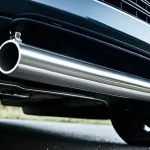Essential Components of Your Car’s Emergency Braking System
Understand what ensures your vehicle stops safely when it matters most.
The emergency braking system relies on several critical components working seamlessly. Start with the brake parts checklist, focusing first on brake pads and brake discs. Brake pads must have sufficient thickness to provide strong friction, while brake discs should be free from deep grooves or warping to maintain effective stopping power. Both parts directly influence braking performance under emergency conditions.
Also to read : Ultimate handbook for optimizing your off-road vehicle’s rear differential lock performance
Next, assess the brake fluid level and quality as part of your pre-journey inspection. Brake fluid transmits the force from the brake pedal to the pads; low or contaminated fluid can reduce braking responsiveness. Check the fluid reservoir for proper levels and any signs of leakage.
Supporting the emergency braking are systems like ABS sensors, which monitor and prevent wheel lock-up during sudden stops, improving stability. The emergency brake (handbrake) serves as a backup to the main brakes and should be tested regularly for tension and effectiveness. Also, pay attention to warning lights on your dashboard that alert you to brake system issues. Regularly performing these visual and manual checks makes your emergency braking system reliable and ready for use when necessary.
Have you seen this : Ultimate Guide: Safely Installing a Tow Bar on Your Family’s Mid-Sized Vehicle
Inspection Checklist for Emergency Braking Safety
Ensuring your car is ready to stop when it matters most
A thorough emergency brake inspection is vital for reliable car safety pre-checks. Start by checking the brake pedal response—press it firmly and note if it feels spongy or too hard, which could indicate air in the brake lines or fluid issues.
Next, inspect the brake pads and discs visually if accessible. Look for uneven wear, thinning pads, or grooves on the discs. Early warning signs like squeaking, grinding noises, or dashboard brake warning lights should never be ignored. These often signal worn components or hydraulic problems that compromise emergency brake function.
For the handbrake or parking brake, pull it up firmly and observe how many clicks you hear—too few or too many clicks can mean a stretched cable or maladjustment.
When conducting this inspection at home, equip yourself with a brake fluid tester, jack stands, and safety gloves. Always ensure the vehicle is on a flat surface and securely supported before checking underneath.
Regular braking system checks using this checklist help catch issues early, safeguarding your vehicle’s ability to perform in emergencies.
Key Maintenance Tips for Brake System Reliability
Maintaining a reliable brake system hinges on timely and consistent care. One of the most crucial car maintenance tips is adhering to recommended timelines for replacing brake components. Typically, brake pads should be replaced every 30,000 to 70,000 miles, depending on the model and usage. Brake discs last longer but often require inspection at similar intervals. The brake fluid change is vital every 2 years or 24,000 miles to prevent moisture buildup, which can severely reduce braking efficiency.
Scheduled professional servicing ensures a thorough check of all brake parts, including hidden wear and contamination, which self-inspection might miss. While drivers can monitor pad thickness and fluid levels, expert technicians identify subtle issues early, improving reliability and safety.
Additionally, environmental factors like humidity and road salt accelerate corrosion, increasing brake wear. Similarly, aggressive driving styles, such as frequent hard braking, shorten the lifespan of pads and discs. Adjusting habits and maintaining the brake fluid levels helps keep the brake system functioning optimally between visits.
Regular attention to these maintenance aspects increases brake system reliability and ensures safer driving experiences.
Understanding the Role of ABS and Warning Lights in Emergency Braking
When it comes to emergency braking alerts, the Anti-lock Braking System (ABS) plays a crucial safety role. ABS prevents the wheels from locking during sudden braking, maintaining steering control and reducing the risk of skidding. An ABS check is essential if the brakes feel unresponsive or if you see the ABS warning light illuminate on your dashboard.
The brake warning light often appears as a red or amber symbol shaped like a circle with an exclamation mark or the letters “ABS.” This alerts you to potential issues such as low brake fluid, worn brake pads, or faulty ABS sensors. Recognising ABS sensor issues early can help avoid brake failure during emergency stops.
If any emergency braking alerts or the brake warning light appear before a trip, stop and perform an ABS check or consult a professional. Ignoring these warnings can compromise your braking efficiency and safety on the road. Routinely monitoring dashboard lights allows timely action and ensures your vehicle’s braking system is functioning correctly, especially in emergencies.
Expert Recommendations for Safe Road Readiness
Ensuring road trip safety starts with thorough preparation. Experts emphasize key vehicle inspection advice, including checking brake function, tire pressure, and fluid levels before any journey. These checks detect potential hazards early, preventing failures on the road.
When should you seek immediate mechanical attention? Warning signs such as unusual noises, dashboard alerts, or fluid leaks require prompt professional evaluation. Ignoring these signs risks system failure and compromises safety.
For those wanting to perform their own inspections, locating credible diagrams and instructional guides is crucial. Trusted sources offer detailed visuals that simplify complex vehicle systems. This empowers drivers to perform basic safety checks confidently, fostering proactive maintenance habits.
These expert car safety tips underscore that preparation is non-negotiable. Investing time in pre-travel inspections significantly reduces the likelihood of emergencies and enhances peace of mind. Regularly adhering to these guidelines ensures your vehicle remains reliable and your trip, safe.
By prioritizing these practices, drivers embrace a proactive approach that safeguards themselves and others, making every journey smoother and safer.



